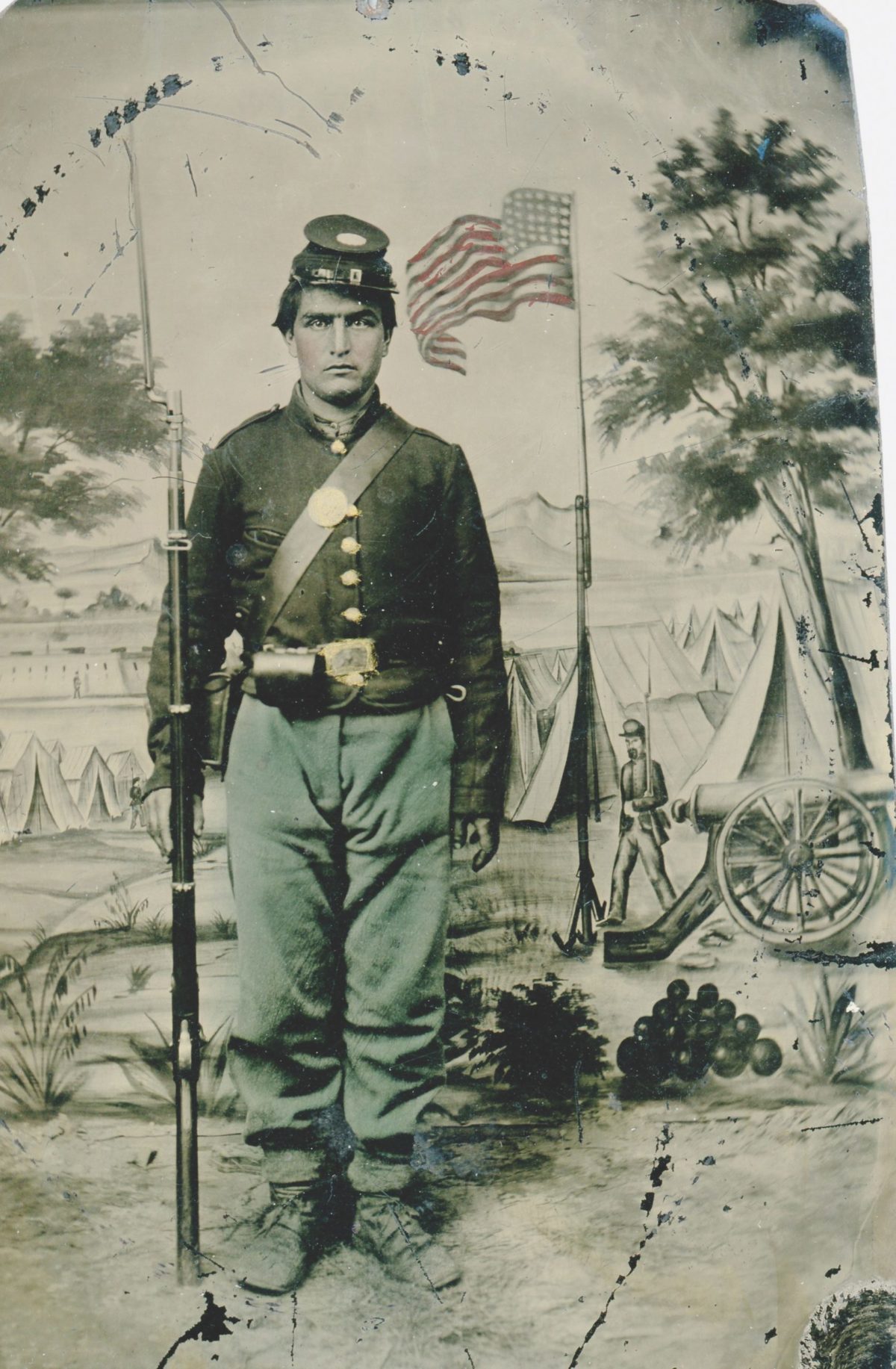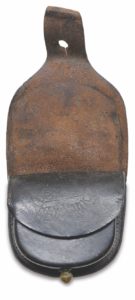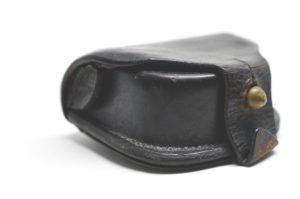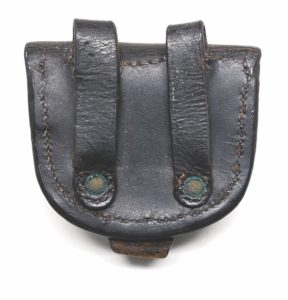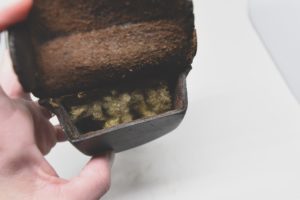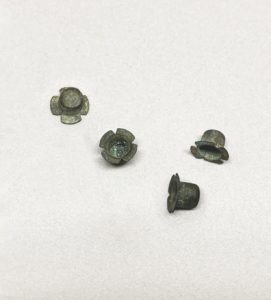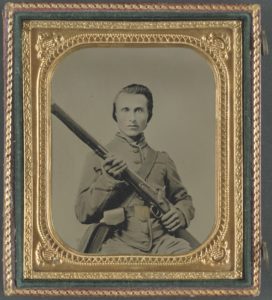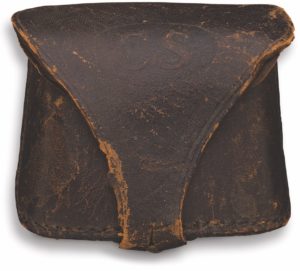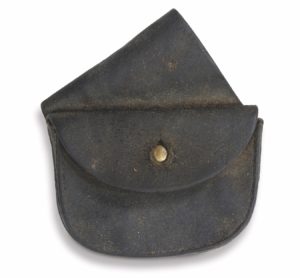Cap boxes don’t get much respect. The little black pouches hung off soldiers’ belts, often overshadowed by their martial neighbors, eye-catching brass belt buckles and scabbards that held wicked-looking bayonets. Veterans wrote poems in praise of their canteens, a cartridge box became the centerpiece of the badge for the Union’s 15th Corps. But no odes, and little acclaim, recorded for the cap box.
Yet they were among the most important pieces of gear in a soldier’s kit. Cap boxes carried their namesake, percussion caps, the revolutionary little copper top hats that served as the priming system for muskets, many cavalry carbines, and even some breechloading rifles. To discharge his weapon, a soldier placed a percussion cap on the cone, or nipple, of his firearm. When the trigger was pulled, the hammer flew forward and forcefully struck the percussion cap. The impact ignited an explosive fulminate of mercury compound inside the cap, creating a spark that dropped through the cone and ignited the powder charge in the barrel, sending a lethal lead missile downrange.
The percussion system was invented in the 1820s, and two decades later it became the standard for the U.S. Army with the issue of the Model 1842 musket.
Troops then needed a way to carry the small percussion caps. Initially, small pockets were cut into issue jackets to hold the caps, but they did not prove satisfactory. By about 1845, U.S. troops were issued the first cap boxes. During the Civil War thousands upon thousands were stitched up for Union and Confederate troops.

